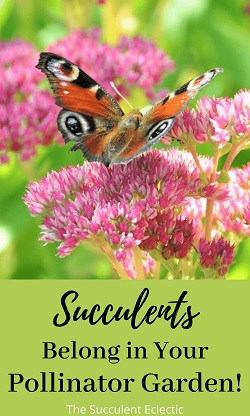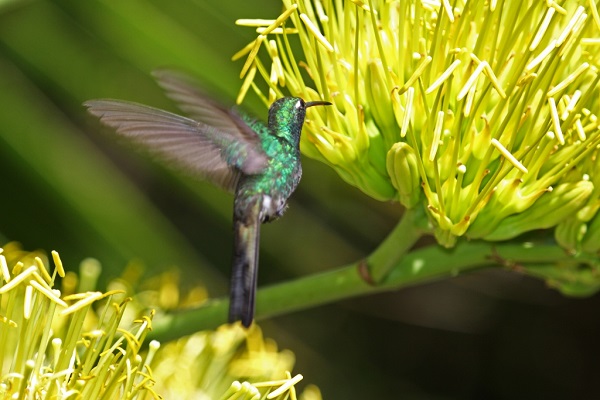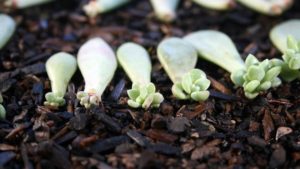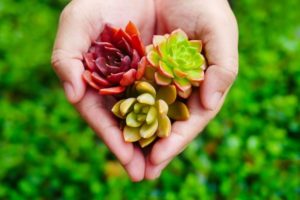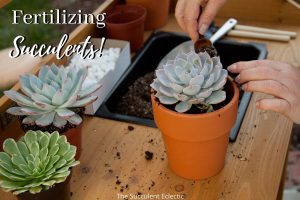Attracting pollinators like bees, butterflies and hummingbirds provides many benefits for you, your garden and the natural world. Pollinator activity will boost the productivity of the vegetables, fruits and herbs that you and your neighbors grow. Providing food and shelter for them helps to support pollinator health and productivity. And there is simply nothing like the magic of winged visitors to your garden to cast a lasting enchantment. Pollinator populations are in trouble. Many gardeners are participating in making pollinator gardens for some or all of these reasons. And succulents should be a part of any pollinator garden, especially one where water conservation is important!
Succulents for Pollinators
In this Post We'll Cover:
{Please note, some links in this post may be affiliate links to sites that pay me a small commission if you click on the link and make a purchase. This commission is at absolutely no cost to you. I only recommend products and companies that I have worked with and truly love! ~Kat}
The Birds and the Bees and Succulents
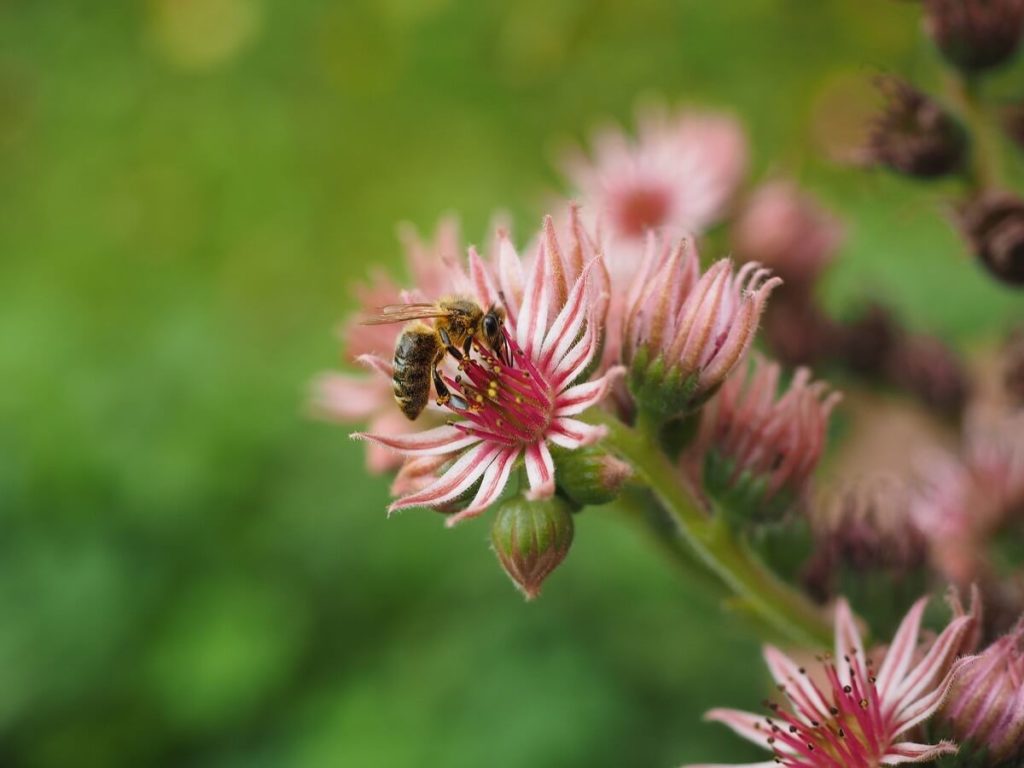
When you take a cutting from a succulent to grow into a new plant, you are taking advantage of the plant’s ability to reproduce vegetatively. This is a series of adaptations succulents have evolved to respond to damage caused by wind, passing animals, falling tree limbs, etc. Each incident of damage results in an opportunity for the plant to propagate itself, to ensure its genes are passed on.
Vegetative reproduction is asexual. There is no genetic input from any other plant. The new life forms that result are just like the mother plant. But there is no genetic diversity, no opportunity to develop any new and possibly more successful traits, no development for the species. For this, there must be sexual reproduction, which relies on pollination and pollinators.
Succulent Flower Form and Pollinators
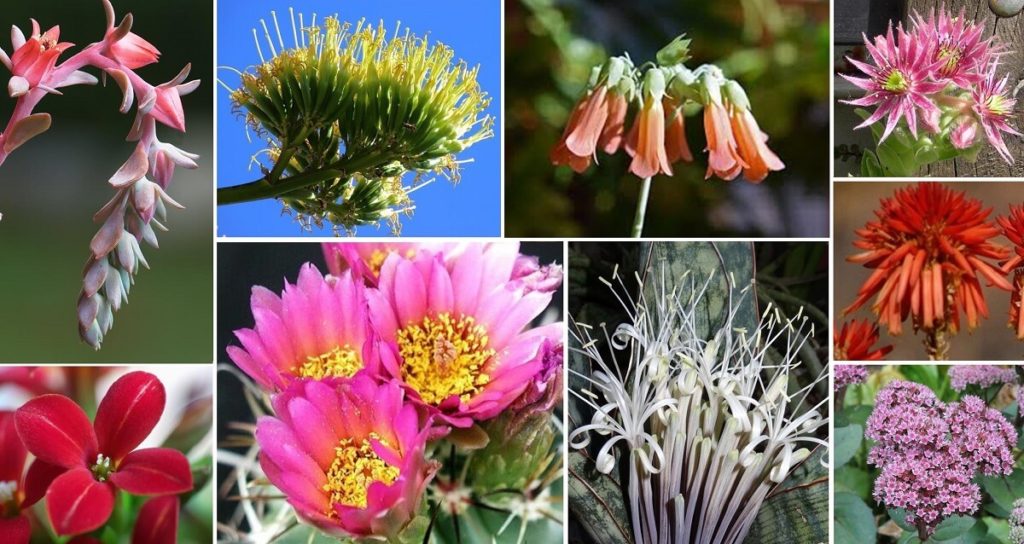
Plants that rely on animal pollination, (as opposed to wind-, water- or self-pollinated plants) have evolved flowers formed, colored and scented to attract specific pollinators. The images above are a small sampling of the wildly varied forms of succulent flowers. Each is perfectly constructed to appeal to and to accommodate its native pollinators. Different succulents are pollinated by bees, butterflies, hummingbirds, moths, flies, wasps, bats, beetles and more. These pollinators ensure the health and vigor of wild populations of succulents.
Be sure to fill your pollinator garden with a variety of flower colors and forms. Each color and form beckons to a different type of pollinator.
Staggered Bloom Times for Pollinators
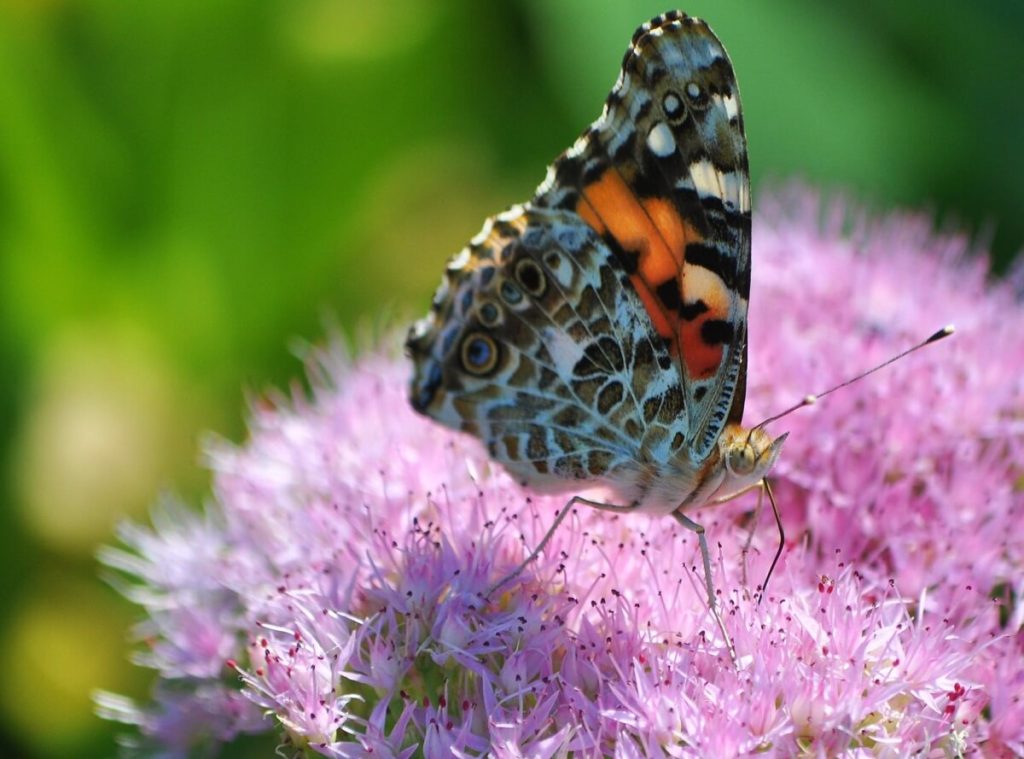
Most succulents bloom in spring or summer, with a few, select sedum varieties now recategorized as hylotelephium blooming well into the fall. Although monarch butterflies are well known for their extraordinary migration over thousands of miles, most pollinators remain close to their home range. They need food every day of the year, just as we do. Be sure to include plants that bloom at different times of the season in your pollinator garden.
Succulents That Attract Hummingbirds
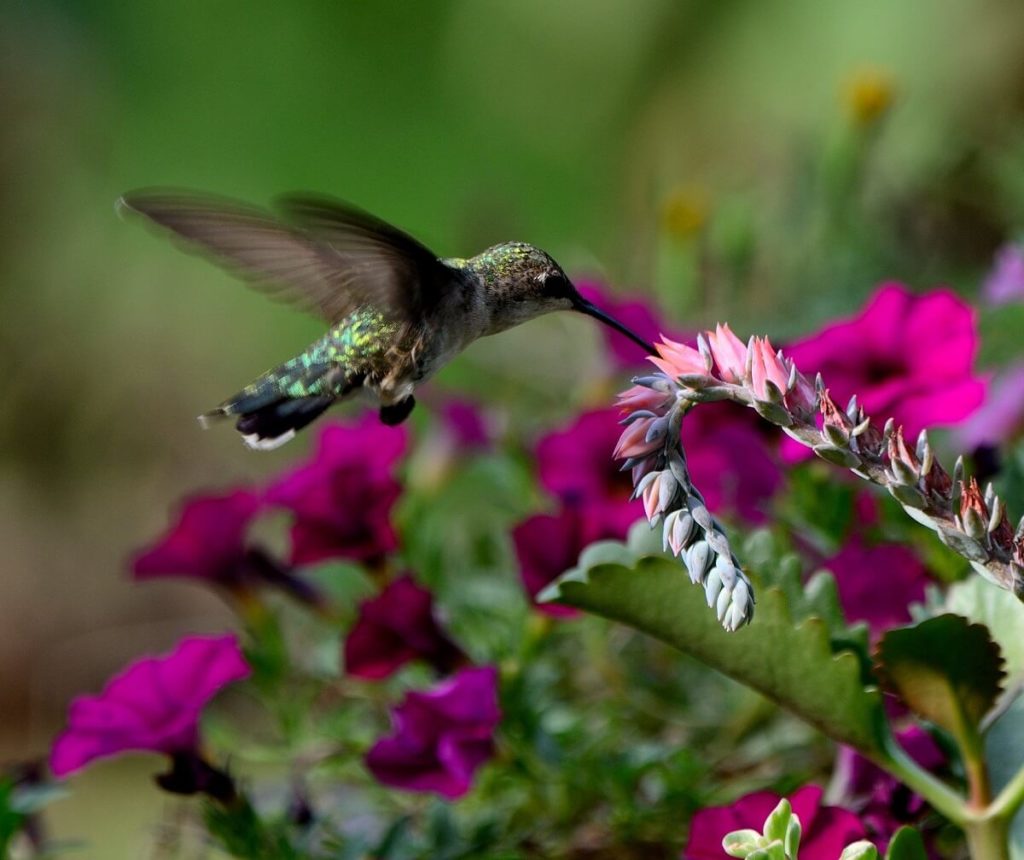
With bright, tubular flowers held aloft on very tall stems, there are a number of succulents that entice hummingbirds to feed from their flowers, thereby pollinating the plants. Here, a hummingbird is feeding from the arching blooms of an Echeveria. Agave, Aloe, Dudleyas, Gasteria, Opuntia, Pachyphytum, Sinningia and Schlumbergera flowers are also highly attractive to hummingbirds.
Thank you, Nancy DeMuro, for the use of this image!
Drought-Tolerant Plants That Attract Bees
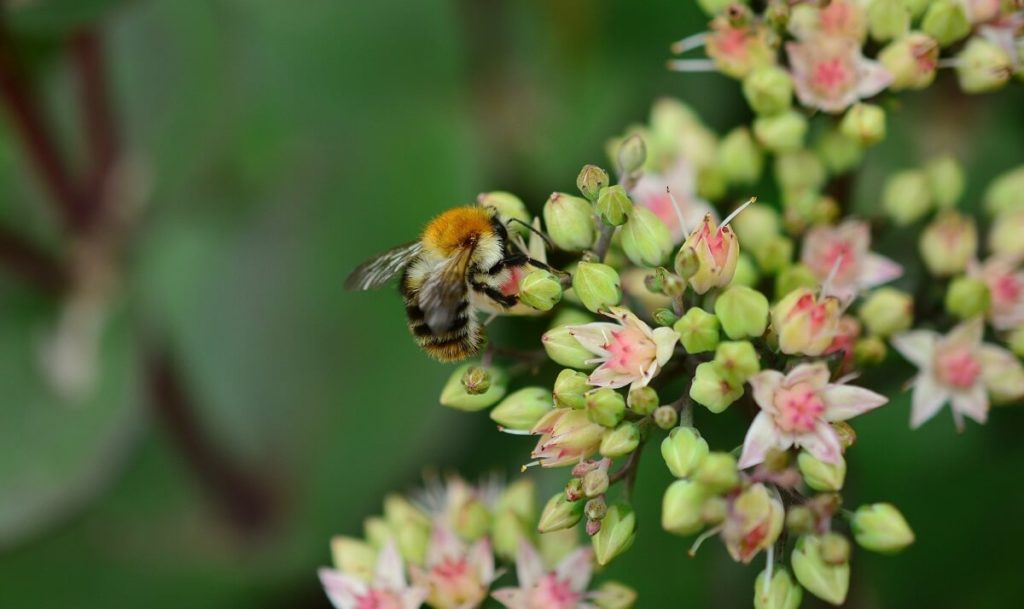
There are over 4,000 bees native to the United States alone, with many thousands more throughout the world. Bee pollination is, directly and indirectly, responsible for much of the food we humans eat. It is estimated by the Entomological Society of America that “Honey bee pollinating activities are worth 143 times more than the value of honey and beeswax they produce ($18.9 billion vs. $140 million).” Incorporating food supplies for bees in your pollinator garden helps to protect the local populations. Many succulents produce flowers formed by clusters of blooms that are highly attractive to bees, including Aeonium, Aichryson, Crassula, Delosperma, Dudleya, Echinocactus, Pectinaria, hardy Sedum, tender Sedum, Sempervivum, Senecio and some Stapelia.
Succulents That Attract Butterflies
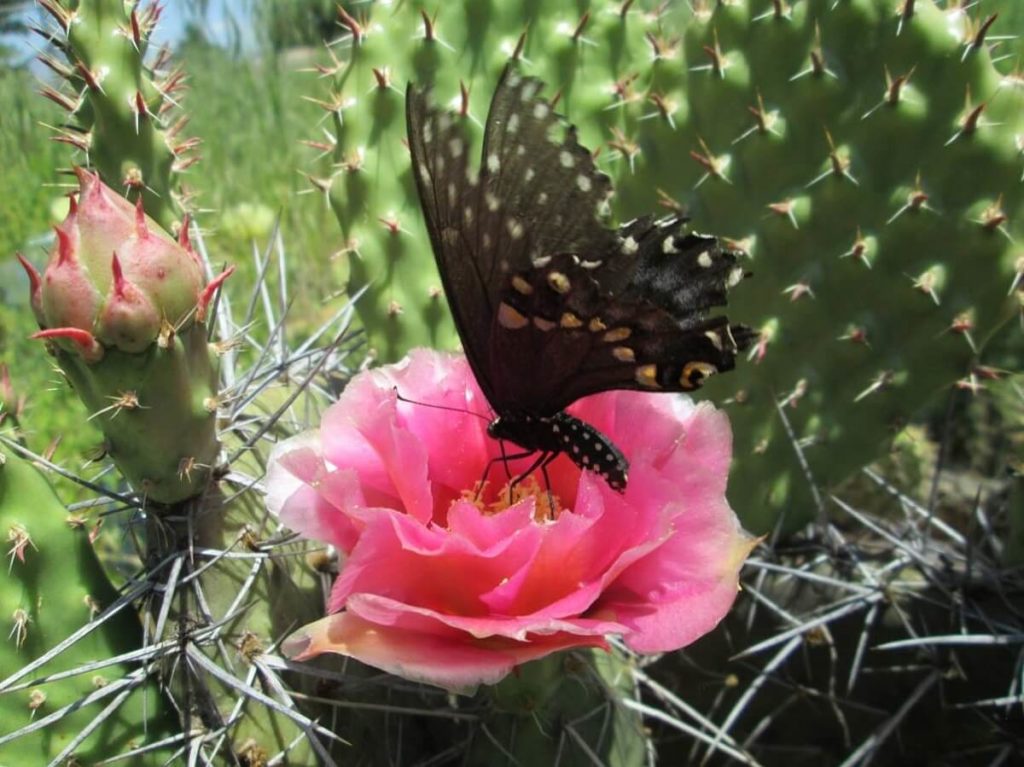
The long-lasting blooms of sedum and sempervivum are genuine butterfly magnets. They also flock to the flowers of Aeonium, Aichryson, Calandrinia, Crassula, Jovibarba, Opuntia, Sempervivum and Senecio.
This photo supplied by Derrill Pope, owner of RainbowFarms, an Etsy shop where she offers dozens of opuntia varieties for sale. She reports they are wildly popular with the local butterflies.
Succulents That Attract Moths
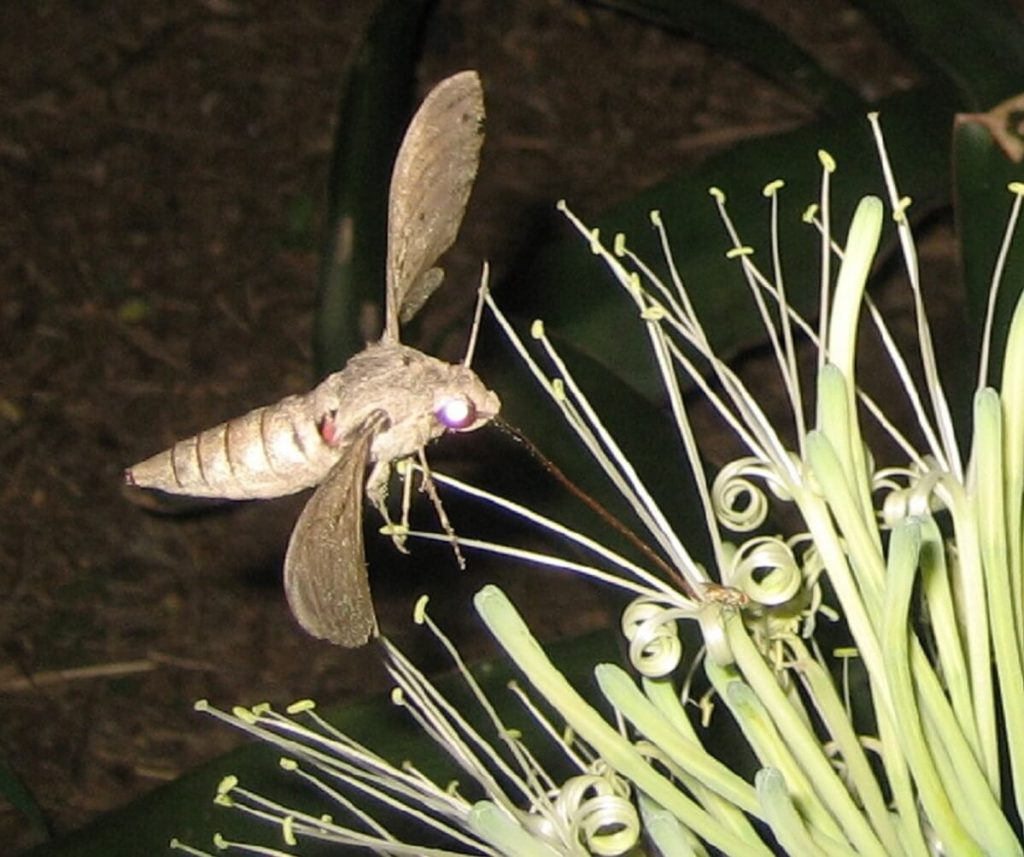
As nocturnal pollinators, moths are typically attracted by very pale colored blooms that seem to almost glow in the moonlight. These blooms also often emit a sweet scent to attract their preferred pollinator. Above is the photo of a hawk moth busily pollinating Sansevieria blooms. Moths are also attracted to Agave, Cereus, Epiphyllum, Saguaro and Yucca blooms.
Bat Pollination of Succulents
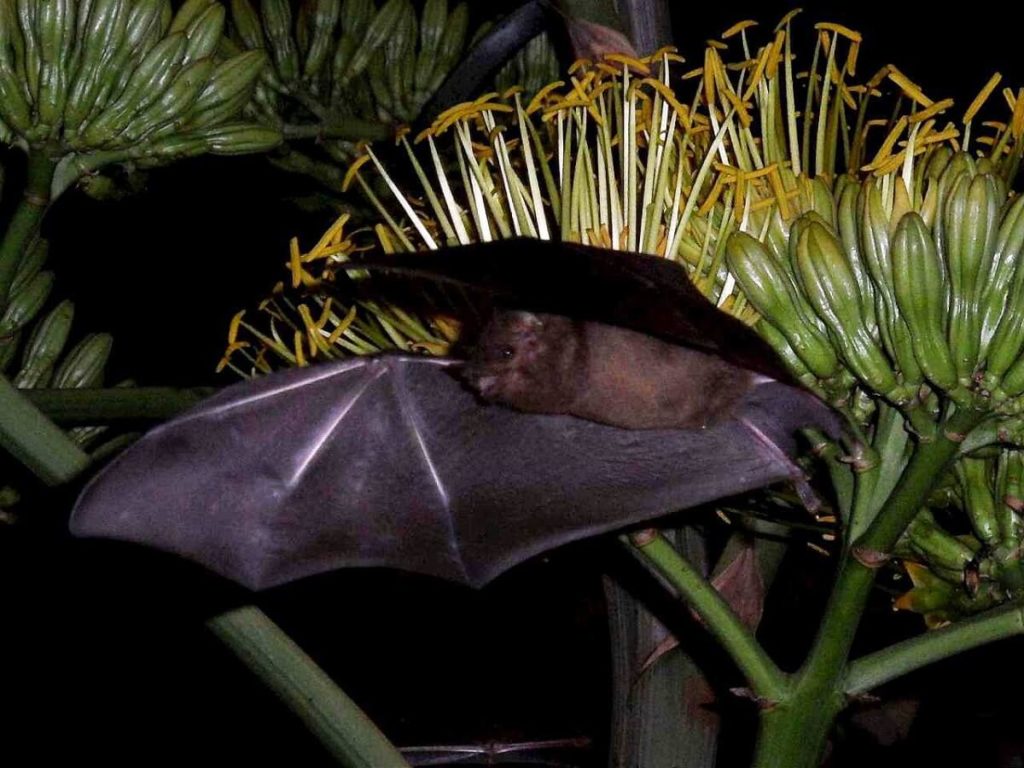
Are you surprised to learn that bats pollinate some succulents? If so, you will be astonished to learn they are the primary pollinators for the tequila Agave. Without bats, there would be no margaritas! Their furry faces collect lots of pollen as they push among blooms held high in the sky. In addition to Agave, bats pollinate Cereus, Hylocereus, Saguaro and Yucca flowers.
I have compiled a table of succulent varieties listed along with the pollinators they attract:
Succulents that Attract Pollinators
| Bees | Butterflies | Hummingbirds | Moths | Bats |
|---|---|---|---|---|
| Aeonium | Aeonium | Agave | Agave | Agave |
| Aichryson | Aichryson | Aloe | Cereus | Cereus |
| Crassula | Celandrinia | Dudleya | Epiphyllum | Hylocereus |
| Delosperma | Crassula | Echeveria | Saguaro | Saguaro |
| Dudleya | Jovibarba | Gasteria | Sansevieria | Yucca |
| Echinocactus | Opuntia | Opuntia | Yucca | |
| Pectinaria | Sedum | Pachyphytum | ||
| Sedum | Senecio | Sinningia | ||
| Sempervivum | Schlumbergera | |||
| Senecio |
Succulent Pollinators
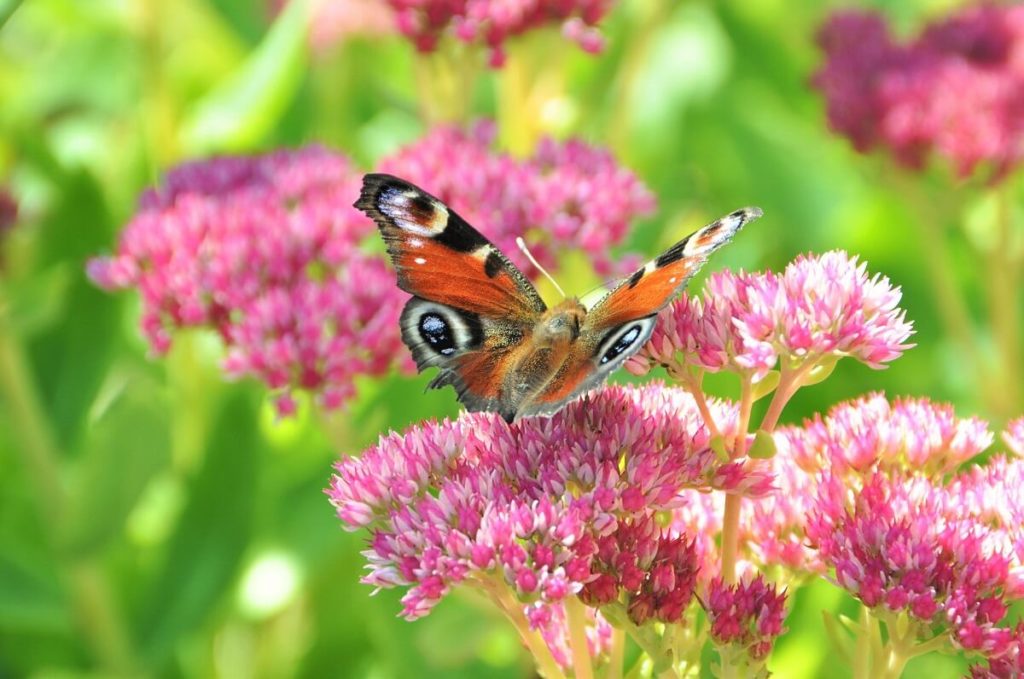
Like other plants, succulents attract a wide array of pollinators. Some, like butterflies and hummingbirds, are beloved by gardeners and add their own beauty to the garden. Other pollinators like bats, flies, wasps, midges and beetles are far less appreciated, though they do important work too. My research for this post led me to the information that midges are responsible for pollinating cacao. Without midges – we would have no chocolate! Long live the chocolate midge!
Resources to Learn More About Pollinators
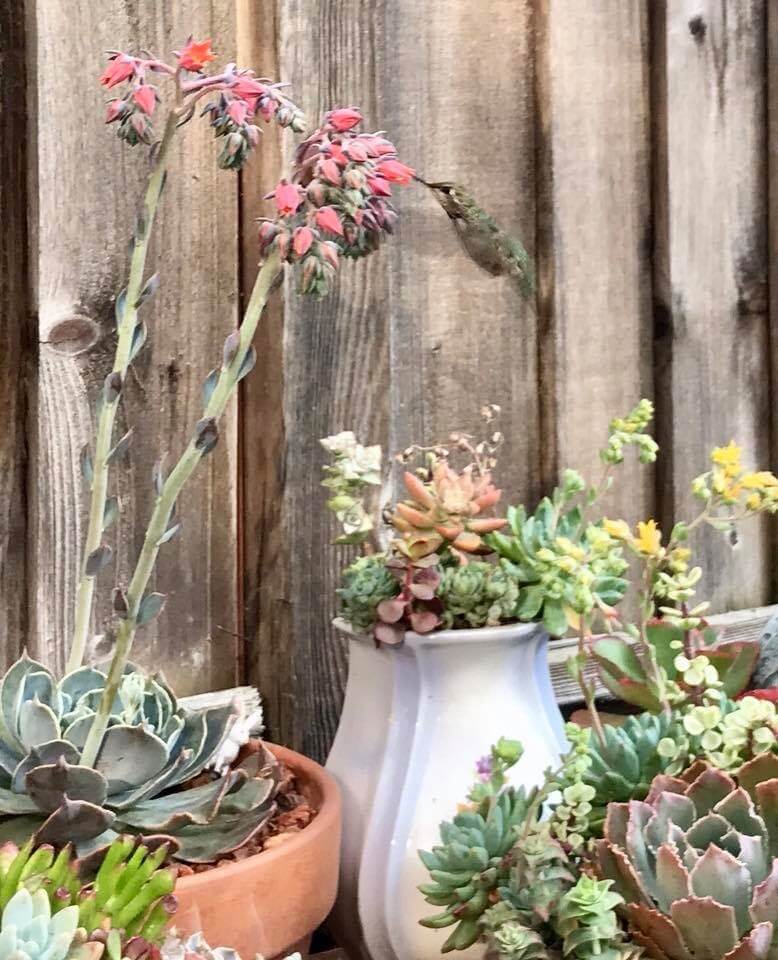
Creating a successful haven for pollinators means much more than simply including the right flowering plants. A well-designed pollinator garden also provides water and shelter for winged visitors as well as food for their young. In a flourishing butterfly garden, make allowances for the foraging of their caterpillars. Remember to limit your use of pesticides to the bare minimum. Restrict any spraying you feel you positively must do, to night time, when most pollinators will not be active in the garden.
For more information about creating a pollinator garden, I recommend the following resources:
Join the Million Pollinator Garden Challenge
Essentials to Attracting Pollinators to the Garden
Saving Our Monarchs. One Milkweed at a Time
Links to learn more about growing these succulents that attract pollinators: Aeonium, aloe, crassula, echeveria, kalanchoe, sansevieria, sedum, sempervivum, senecio,
Thank you Roma Macasaet for the use of this photo of a hummingbird feeding from echeveria flowers!
Additional Ways to Support the Birds, Butterflies and Bees
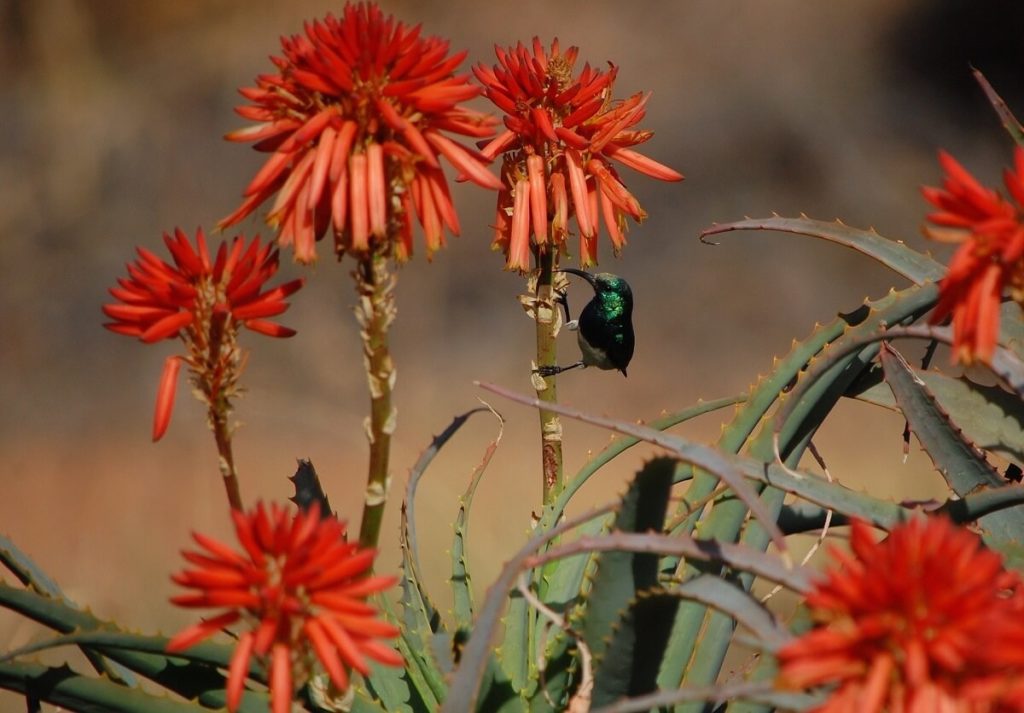
Gardens come in all shapes and sizes, much like pollinators do. You do not need an expansive garden to make pollinators welcome. Even a single container of mixed plants on a balcony or patio can provide much-needed refreshment. And there is more you can do. Offer additional amenities like water and safe cover to keep your favorite pollinators coming back. Puddling stones are a wonderful way to attract butterflies and make them welcome in your garden. If you have a birdbath, keep it filled with water and add a flat stone that comes just to the surface of the water. Butterflies will wade out on the rock to drink. Hummingbird feeders keep local hummers happy and well-fed between blooms.
Once you’ve attracted pollinators to your garden, take care not to kill them with pesticides! If you must spray for pests, do so carefully and selectively to avoid harming your pollinators. And always avoid spraying any open blossoms. Instead, use worm castings in the soil and as top dressing to prevent insects from attacking your succulents!
Pollinators add life, motion, color, health, vitality, fertility and magic to the garden. Make them welcome through your plant choices. And don’t forget to add succulents!
Happy Gardening!

P.S. Subscribe and get my FREE course, 7 Steps to Succulent Success! Thanks!
P.P.S. Why not join my Facebook Group for succulent lovers? We talk about succulent care, propagation, succulent identification, and design. It’s a warm and welcoming group that would love to meet you!
